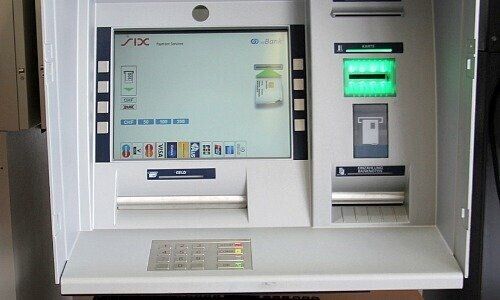The precipitous drop in cash transactions over the past five years means that ATMs, like people, are now on the chopping block.
«Cash is king» goes the colloquial phrase. But if recent trends are anything to go by, it will soon be replaced by «cash is trash». According to the Swiss National Bank (SNB), cash withdrawals in Switzerland have declined 31 percent since 2015. They fell even more during the height of the pandemic last year, and they have not recovered since.
That poses a structural problem for banks. Declining withdrawals means that banks cannot run their ATMs all that efficiently given that the cost per each cash transaction is constantly on the up. Most Swiss ATMs, in any case, only process about 30,000 transactions a year - even though they would easily be capable of managing 120,000.
All Roads Lead to Rome
So what should they do? They could focus on cashless payment methods, such as debit cards or smartphone apps. Or they can cooperate with the retail sector, allowing clients access to cash that way. They can also cut the number of ATMs, as Postfinance has been doing.
Another thing they can do is optimize the placing of ATMs. At least that is a key finding from a new study by Swiss stock exchange SIX (German only) in cooperation with Senozon, an analytical consultancy.
The analysis looked at how financial institutions might trim costs while still adequately covering the country's cash needs. They took the basic thesis that many of the roughly 6,000 current ATM locations may be superfluous. And if they were, where should the important ones actually be?
Significant Savings
The answer was stunning. About 2,161 ATMs at 1,159 locations are enough in order to serve the entire country. With that number, each ATM would be in a position to process about 80,000 transactions a year, a significant improvement in efficiency.
And if the banks cooperated among themselves, they would be able to meet the needs of Swiss citizens by cutting the number of ATMs by two-thirds. It might even improve the general population's access to cash, the SIX study says. According to their distribution and placement framework, the number of ATMs would increase at highly popular locations, with those in less frequented areas being removed.
Just doing that could potentially result in savings of about $110 million US dollars annually, given that each ATM costs about $32,500 to run every year.
The Branding Problem
According to a media spokesperson, SIX is in touch with a number of financial institutes in order to assess ways to improve the current situation. The sobering answer that they got back is that not all banks are seeing the same declines in transactions at their ATM networks.
That means that changing the overall framework will not be an easy exercise. As finews.ch recently reported, branding factors plays a central role, and particularly so with ATMs. Given this, it means the banks are likely to remain averse to any form of «white-labeling», where different institutes run ATMs jointly, for quite some time.


































